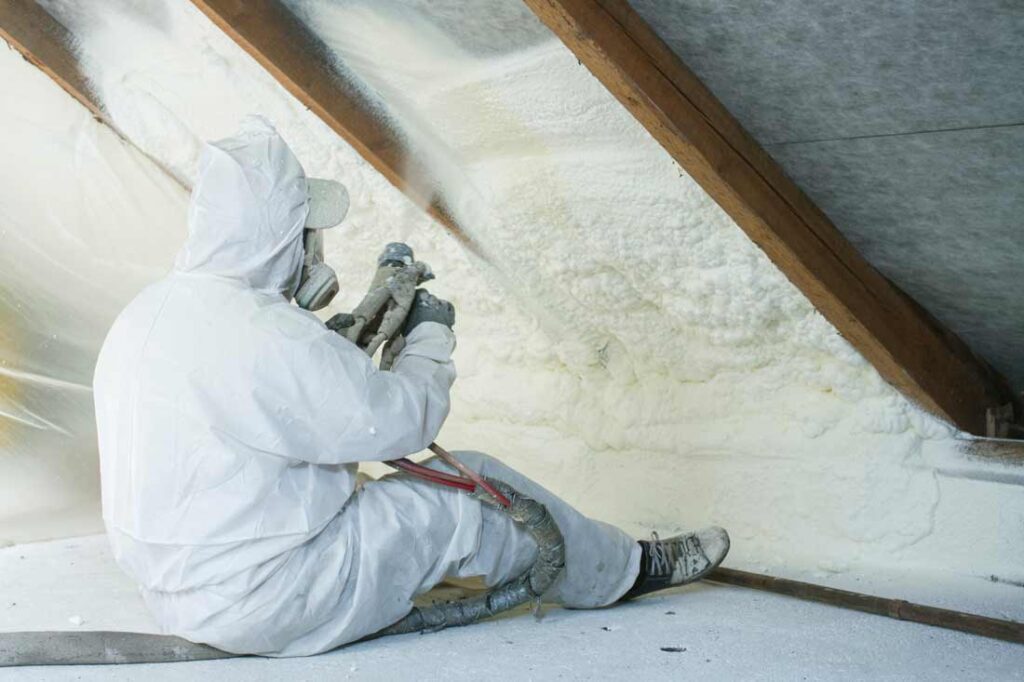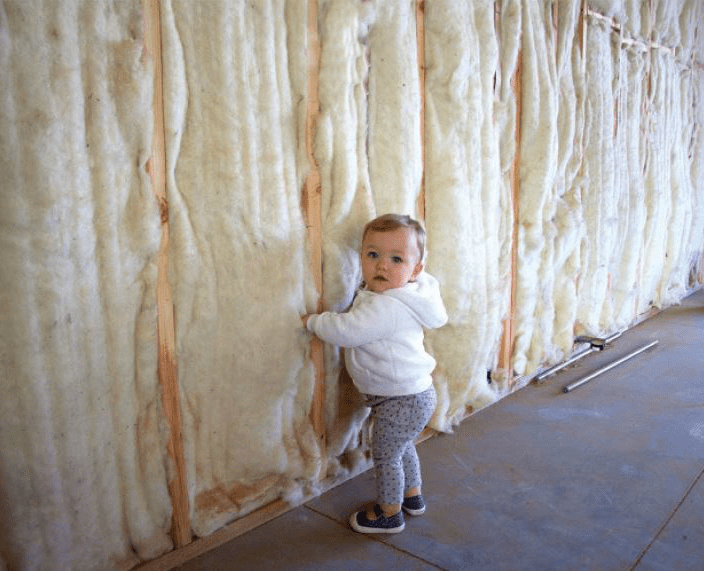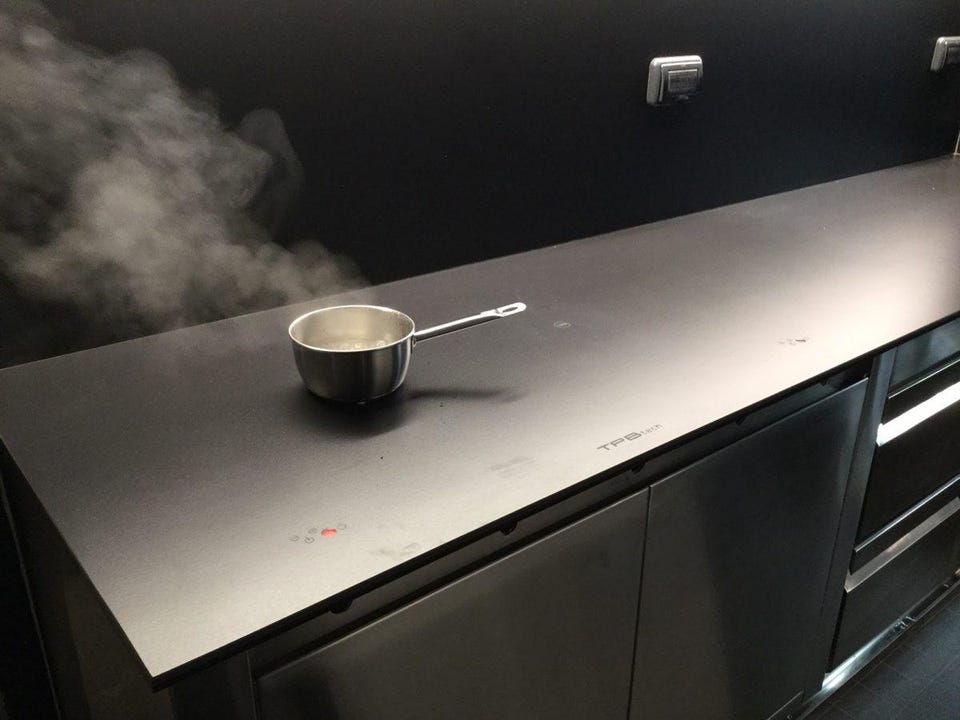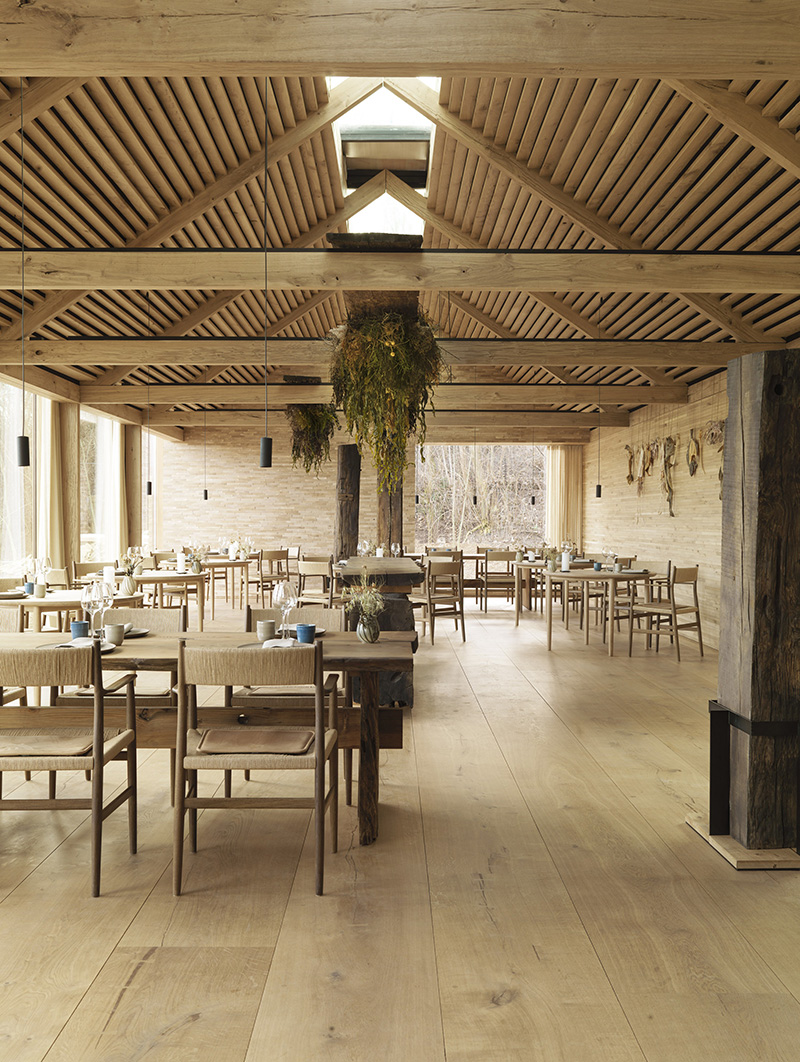Table of Contents
ToggleWhat Is the Next Asbestos?
Did the use of unhealthy materials stop at asbestos and lead-based paint? As scientists and health practitioners continue to discover links between building materials and disease or long-term health impacts, Vera Iconica takes a look at four commonly used materials proven to diminish your health. Will future generations look back on these four items in shock that they were once considered best practices?

Cheerful Snowscapes or Respiratory Doom?
Asbestos was a popular material for decades. The enthusiastic use of asbestos extended beyond building materials and into clothing, toys, and even Hollywood props. Movies like The Wizard of Oz used asbestos to represent snow, an “improvement” to the highly flammable cotton balls used in earlier movies. Asbestos was in every home. It was your tile flooring, it was your insulation, it was your fluffy white snow sprinkled upon your Christmas tree. It wasn’t until the 1970s that links between asbestos and mesothelioma, a cancer in the respiratory system, became public conversation. Even then, it took decades for the standard of practice to shift. Surprisingly, asbestos is still technically not a banned material in the United States, as it is in Sweden, Japan, and many other countries; it’s just a heavily regulated material. According to The Environmental Working Group, common toys, like crayons, still contain trace amounts of asbestos and only one state bans the use of asbestos in children’s toys.
Asbestos, along with many other materials, infiltrates the air. The air in your home is full of off-gassing of volatile organic compounds (VOCs) from building materials, furniture, and household cleaners. These toxins reduce your overall indoor air quality. The problem is that you can’t see them, so you don’t think about them. The Environmental Protection Agency lists many of the commonly found VOCs in your home, any of which can impact cognitive and respiratory functions, your ability to sleep soundly, and even cause long-term damage to your internal organs.
The public is becoming increasingly aware of the harms of many commonly-used materials. Sometimes the continued use of these materials is due to the absence of an equivalent substitute in terms of perceived durability or quality. Often, people do not pursue the substitute because they assume healthier materials cost more.
Is Spray Foam Next?


The topics of VOCs and indoor air quality come up on every project at Vera Iconica. We discuss with clients which building materials can be swapped out for better, healthier options. An example that we often bring up is spray foam insulation. Spray foam insulation has become an industry standard because it is energy efficient, long-lasting (if installed properly, and that is a big “if”), and is often paired with the idea of completely sealing your home (which ironically has been associated with poor indoor air quality). While there is no debate over the insulating properties of spray foam, the chemical composition alone creates a toxic environment for the installers, which lingers in the air after they leave. The Environmental Protection Agency has been calling attention to the short-term and long-term health risks of spray foam for years, including potential risk in removal or disturbance of existing spray foam, with warnings that mirror the concerns of asbestos decades before.
Did you know?
Spray foam contributes to the acidification of our planet, and the eutrophication of waterbodies including damage to coral reefs, global warming, ozone depletion, and smog formation. Moreover, over 50% of the chemicals cause cancer, respiratory illness, and developmental issues particularly in children, while another approximately 35% are mammalians and organ toxicants. Additionally, spray foam contains bioaccumulative toxins, reproductive and endocrine disruptors, and are eye and skin irritants. Source: Quartz Product Database
Instead, Vera Iconica recommends non-toxic, sustainable alternatives, such as sheep’s wool insulation, which doesn’t require any protective gear to install and actually improves your indoor air quality through filtration naturally inherent to wool material. Think about it: if given a choice, do you want materials installed by trained professionals required to wear hazmat suits, or a renewable resource that can be used as a pillow if you ordered extra?
Will We Ever Give Up Our Gas Stoves?
Taking away a person’s gas stove is a relatively new conversation, but one of the most controversial topics debated amongst health conscious cooking enthusiasts. Many of us are passionate about our gas stoves, whether it be because of the aesthetic quality or the greater precision in cooking inferred from the ability to see and control a flame. Much of the concern around gas stoves has to do with the gas itself and whether the open flame impacts your indoor air quality. Can adequate ventilation mitigate the problem? Maybe, maybe not.
According to a 2022 New York Times article, the science and data are trending toward the end of gas powered appliances in homes because they are “damaging health and climate all at once.” New York City has already passed a bill banning the installation of gas appliances in new construction, beginning in 2024. The State of New York has introduced legislation that could expand the ban on new gas appliances statewide by 2025. The use of open flame appliances allows noxious gases to infiltrate the home any time the pilot light is running and has been shown to impact the cognitive and respiratory development of children. In fact, The International Journal of Environmental Research and Public Health published a study in 2022 that showed 12.7% of current childhood asthma cases in the United States are directly attributable to gas stoves.
The good news is that we have other options: there is the typical electric stove, which is seen as dated technology, and the induction cooktop, which is quickly gaining traction in the market. Induction presents exciting design opportunities, which are showing up in demonstration kitchens and showrooms around the world. As technology progresses, we are going to see options for induction continue to expand and may even see seamless integration of induction cooktops into your counter surfaces. Imagine a kitchen counter without a traditional cooktop anywhere in sight! As popularity for induction increases and continued use is studied, we will also see continued research into induction’s potential downsides.

Similar to a wireless charger for your iPhone, induction uses magnetism rather than an electric-based heat source to offer precision in cooking without the harmful release of toxic gas. There are, however, two main hurdles to induction becoming mainstream. The first hurdle is an unwarranted association with electric cooktops, commonly perceived to lack in quality, sophistication and precision cooking. Second is the concern with electromagnetic fields (EMF waves) generated during use of an induction cooktop.
All electronic devices give off electromagnetic waves and the Word Health Organization says these waves have potential to cause headaches, anxiety, depression, and impact your quality of sleep. Your TV, your hairdryer, even your phone give off these electromagnetic waves. EMF waves are certainly a concern, but the science studying EMF provides mixed signals. Atmos, a climate and culture magazine, researched both sides of the conversation and found that scientists generally agree that EMF waves are given off by induction cooktop use, but the waves are believed to be such low levels that there isn’t risk of damaging your cells, as there is with exposure to X-rays, MRIs, or other larger EMF outputs. This leads us to wonder if we should we be asking, what is a “safe” level of radiation?
As more research amasses over time, what will be seen as the greater or lesser evil – air pollution or radiation in your home? As a firm that focuses on health and wellness, Vera Iconica will stay informed on the current science to make sure we are part of the conversation and designing the healthiest homes.
Tried-and-True Still Reigns
Impacts from exposure to polyvinyl chloride, or PVC, can range from dizziness and eye irritation to reproductive defects and cancer, yet PVC is all over your home. PVC can be found in everything from flooring and windows to toys and clothing. PVC is a popular backing of lower-grade flooring, due to its waterproofness and durability. PVC pipes are incredibly prevalent but have gradually lost popularity because of the use of vinyl, a known carcinogen. Although ABS (black plastic piping) and other PVC alternatives, like PEX, are considered safer than standard PVC, there are still studies that show chemicals from any plastics, like PEX can leak into your water supply lines. PVC, specifically, has been used less for supply lines, but is still incredibly common for drain and sewage lines, which feed into the overall water system, so the chemicals used in PVC pipes and even the adhesives used during installation can lead to downstream contamination.
There are better solutions; for water supply, the tried-and-true copper piping is still the top recommendation. In addition to avoiding chemicals from plastics, copper is a natural antimicrobial, helping to prevent any mold or mildew buildup. For drains, polyester and polypropylene-based pipes are less likely to leach chemicals. Because of the potential impact on occupant health, this is one of the reasons we, as a firm, push for all natural materials like solid wood flooring, wood and metal windows, and copper plumbing, rather than anything that has vinyl in the composition.

Save the Formaldehyde for the Frogs!
Removing formaldehyde from your home seems obvious, since it has the dubious quality of sounding gross and takes the minds of many generations to their high school science classes lined with frogs. Formaldehyde is a very common chemical used in furniture, plywood, and even tobacco products. High levels of exposure or exposure over many years can lead to rashes, changes in lung function, and has even been linked to rare forms of nose and throat cancer, according to the Centers for Disease Control and Prevention (CDC). Preserving frogs in a research lab is one thing, but intuitively, this chemical preservative doesn’t seem like something we should have in our home.
The problem is that formaldehyde is an incredibly strong binder that has been hard to move away from. That plywood you use…each of those layers are glued together with a formaldehyde-based resin. The CDC identifies formaldehyde use in your gas stove, your furniture, flooring, and many of the glues and caulks used when building your home. They even attribute an increased problem with formaldehyde use as newer homes have created more of a sealed climate, not letting your home breathe and not allowing for air exchanges needed to improve indoor air quality. Using formaldehyde-free furniture, solid wood or plywood with bio-based resins, and designing a breathable home are all solutions we strive for and clients should expect.
Challenging Convention for a Healthier Future
At Vera Iconica, we have these discussions with every client, on every project to ensure we are collectively making informed decisions that encourage opportunities for wellness and healthy environments. What are the best materials for your specific health concerns, needs, and lifestyle? What are healthier alternatives to industry standard options that can alleviate your concerns?
You are indoors most of your day – you and your family deserve to spend that time in a healthy space!
Steve Seely
Steve is a registered architect and project manager with 13+ years of experience in healthcare design, space planning, and design. He has the unique perspective of working on both the design and client side of the table. Design-process driven and client focused, Steve's strong technical background is balanced by his design and presentation abilities, making sure that every detail of your project turns out just how you dream it.